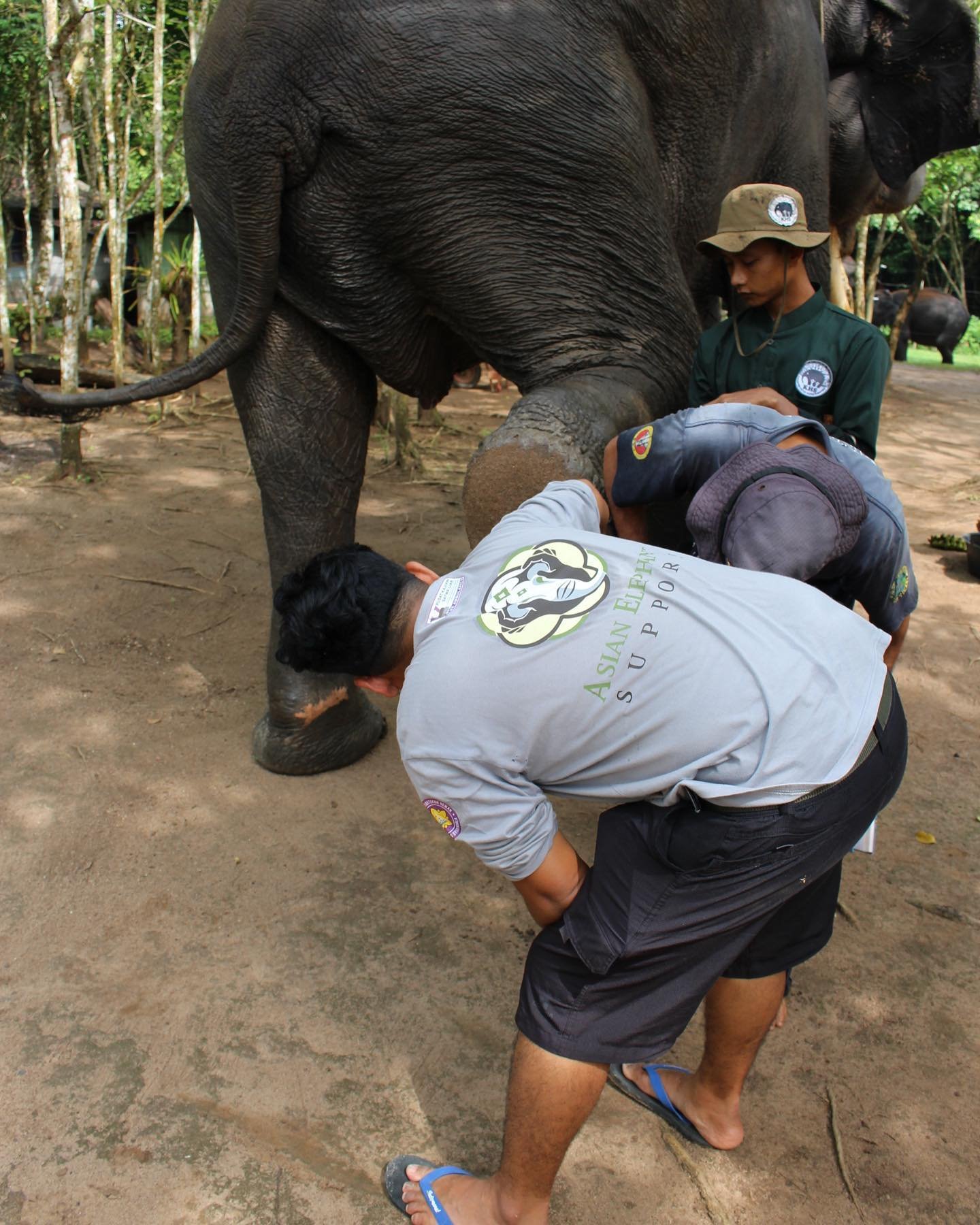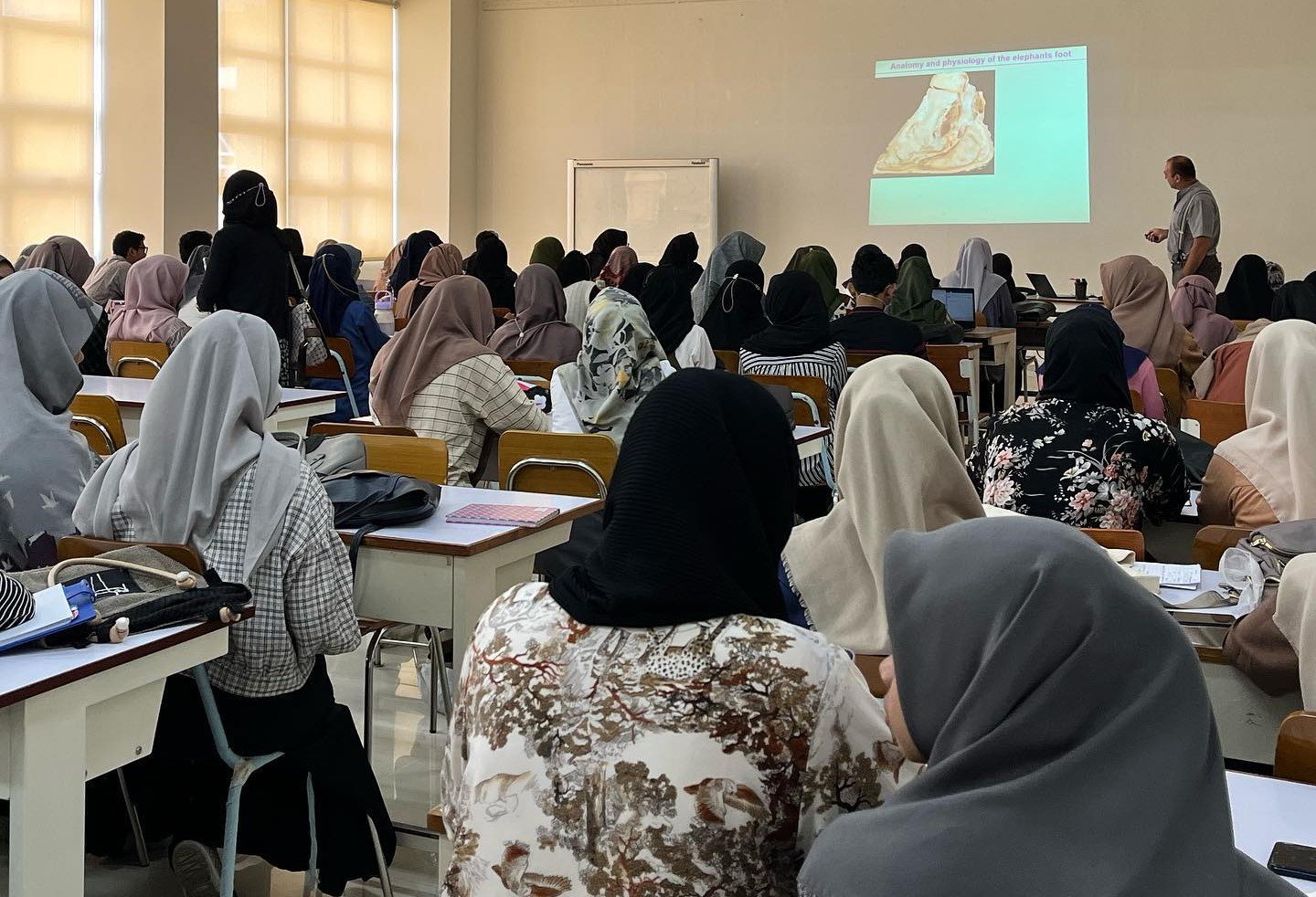In 2011, AES received a grant from the U.S. Fish and Wildlife Service’s Asian Elephant Conservation Fund to support important educational opportunities for veterinarians from Asian elephant range countries. On March 27- 30,2012, AES president attended the Regional Asian Elephant Veterinary Workshop in Banda Aceh, Sumatra, along with our international advisor, Heidi Riddle.
Thirty-five veterinarians representing the Asian elephant range countries of India, Sri Lanka, Thailand, Laos, Nepal, Myanmar, Malaysia (Sabah) and Indonesia attended this four day workshop. Veterinarians from Germany, Japan, and Singapore also participated. The goals of the workshop are to provide in-country veterinarians with a unique opportunity for building their own capacity by sharing experiences and gaining valuable knowledge about the health and well-being of Asian elephants. Most importantly, the workshop provides an opportunity to network with others in the region to ensure continued collaborations long after everyone has returned home.
The first day of the workshop was a full day of presentations. The topics included status and health care management of elephants in Myanmar, Providing care to elephants in Lao PDR, and Health management of captive elephants in Sumatra.
The second day began with a presentation followed by hands-on ultrasound demonstrations with six elephants, at the campus of the Syiah Kuala University. Workshop attendees were given an opportunity to ultrasound either a male or female elephant, and better understand the interpretation of the anatomical images. In addition to the workshop attendees, veterinary students from the University’s Veterinary College also participated in this unique learning session.
Day three was one to celebrate. We have all attended conferences where the attendees seem to fade with the passing days of papers, especially the long days of presentations. Not at this workshop! The presentations began at 8 a.m. and concluded at 7 p.m. and everyone was as alert and tuned in at 7 p.m. as they were when the day started. The presenters included veterinarians that AES has supported in various projects, such as Dr. Christopher Stremme from Sumatra-Indonesia, and Drs. Arun Zachariah and Kushal Sarma from India. These veterinarians have substantial experience with elephants and they understand the importance of sharing information with their peers. It was a wonderful opportunity to visit in person with Drs. Stremme, Zachariah, and Sarma and hear the progress of their work.
The fourth and final day of the workshop was another hands-on demonstration with the elephants at the University campus. This session covered foot care, methods of weighing (including a demonstration with one of the scales donated by AES), conducting a thorough general examination, and injection protocols. Once again the University veterinary students also participated.
Overall, the workshop was a success and was appreciated by all of the attendees. It was also a wonderful opportunity to meet veterinarians who are representatives of governmental and nongovernmental organizations from the various Asian elephant range countries. This workshop will certainly lead to further collaborative opportunities in the future, as we are most effective when we work together for the same objective of helping Asian elephants survive the challenges they face every day.






















